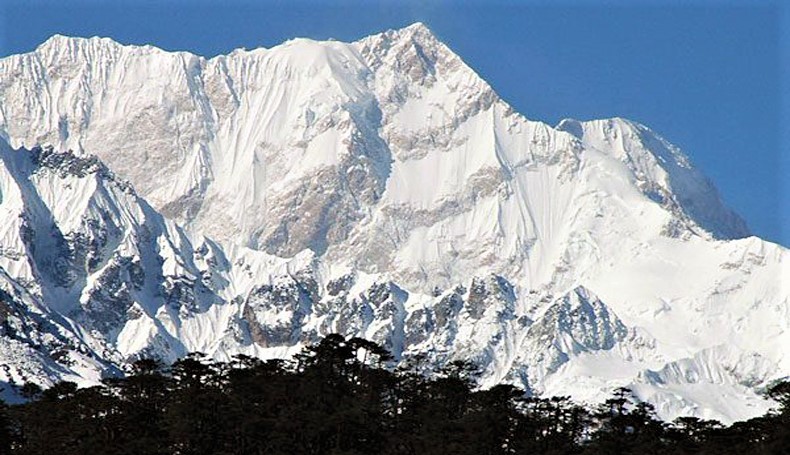Kanchenjunga Circuit trek is prominently popular as one of the rewarding trekking trails among the trekkers who come to experience the wilderness, adventure, and less crowded area trekking Nepal. Being popular as the third-world highest mountain and the second-highest mountain in Nepal, Mt. Kanchenjunga has successfully fascinated hundreds of adventure enthusiasts from different parts of the world to celebrate a spectacular trek in the lap of giant Mt. Kanchenjunga and Mt. Everest.
Also, Kanchenjunga Circuit Trek is the only popular trekking in Nepal in the Eastern part of Nepal. People ignore Kanchenjunga Circuit Trek as remote and not facilitated area trekking in Nepal but those who have undertaken this trek remark that they had absolutely wonderful moments and the trek was the most memorable among the treks they have done ever.
The Kanchenjunga Circuit trek is getting its popularity among nature enthusiasts these days. The trail is protected by Kanchenjungha Conservation Area Project. The protected area offers an opportunity of experiencing lush and dense forests along with amazing species of wildlife including the famous musk deer and blue sheep. Kanchenjunga Circuit Trek offers some extraordinarily magnificent Himalayan views of Mt. Kanchenjunga 8586m, Mt. Lhotse 8516, Mt. Makalu 8463m, Jhanu Himal, Nepal peak, and also an insight into holy Tibetan monasteries and experience of a dialect culture.
The major attractions of the Kanchenjunga base camp trek are the magnificent views of the snow-capped mountains, superb landscapes from the subtropical lowlands to the stunning glacial plateau, lush and dense forests along with amazing wildlife including the famous musk deer and blue sheep. Kanchenjunga Circuit Trek commences from Basantapur after a 6-7 hours drive from Dharan. Dharan is a beautiful city in the eastern part of Nepal.
To get Dharan, either you have to drive for 10-12 hours or you have to take a short flight. A minimum of two days are required for overland transportation from Kathmandu. Then the trails follow through the beautiful village of Chauki Bhanjyang Dovansekathum Amjelasa Gyapla Gunsa Lhonak and ultimately, get to Kanchenjunga Pangpema Base Camp ( southern base camp) then trail returns to the Gunsa village & heading through Sele Le Pass / Mirgin la pass 4674m to Kanchenjunga Oktang Base Camp ( Northern Base Camp).
The trail continues descending via Andaphedi Yamphudin Lalikharka Phuphedanda & finally gets Suketar then you will drive or fly back to Kathmandu. Autumn & spring season is the best time to make the Kanchenjunga Circuit trek; however, we at Magic Expedition and Tours organize it all around the year as per the traveler's wish and time schedule. A minimum of four weeks of holidays are required for the Kanchenjunga Circuit trek or also known as the Sele Le Pass trek.
Since Kanchenjunga Circuit Trek is a Restricted Area Trekking you need to obtain a special area trekking permit and Kanchenjunga Restricted Area Entry Permit. No individual trekker is permitted to make his/her independent trekking in Kanchenjunga restricted Area. They, at least, need to collect two people for Kanchenjunga Circuit Trek. And, trekkers are to accompany a guide and porter.
The best time of the year for the Kanchenjunga Circuit Trek is Autumn (Sep- Nov). The trekkers will be using very basic accommodations during their Kanchenjunga Circuit Trek. Certain items of food are provided by the local lodges owned by the local people.
For More Details Regarding this Trip to Customize please Contact Us - ;


